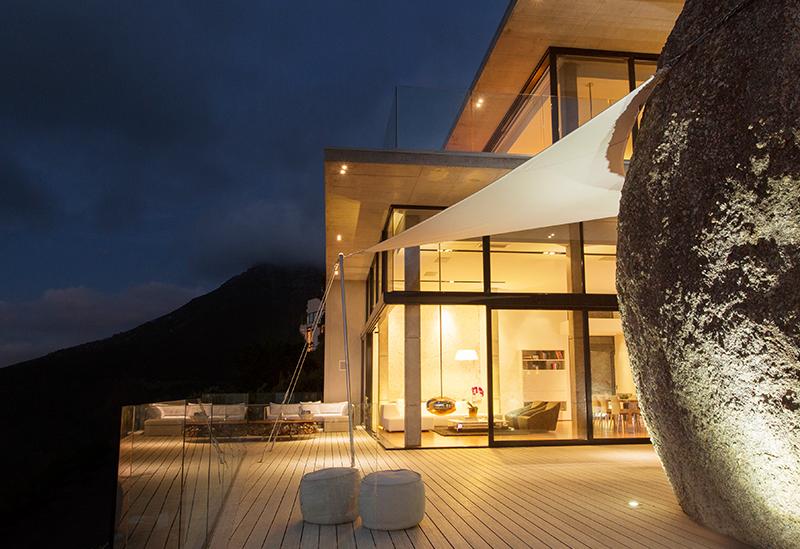Creating Your Own Adventure in Private Real Estate
Last year, Ares wrote about approaches investors could use to time commitments to private funds. The punchline is as follows:
Private capital vintage years1 with below-average fundraising tend to outperform crowded vintage years. So, one potential investment strategy is to lean into the less popular vintages and seek to earn a ‘countercyclical premium’—as one is doing the opposite of what most investors do.

These results are intuitive and may indicate that 2024 is a great time to invest, given that fundraising is down across the private capital industry. But even putting the current fundraising environment aside, market timing sounds easy in theory: “Simply, lean in when others are running away and hopefully earn a countercyclical premium.”
However, many investors find themselves with liquidity constraints during the down years as capital distributions tend to slow. So, in the current environment, many investors are facing the following predicament:
- They understand that funds raised during down years have historically tended to outperform funds raised during boom years; and
- The very economic conditions that create these potential upside opportunities also mean that investors may receive fewer distributions from existing investments, and therefore, have less cash to invest in new opportunities.
So, what is the best path forward for an investor? The simplest option may be to hold any illiquid funds in a portfolio to maturity and forgo any potential countercyclical premium. Another option would be to sell some fund interests in the secondaries market and use the proceeds to invest. Other liquidity options exist, such as borrowing against illiquid funds in a portfolio to generate liquidity, but an investor still must decide to hold or to sell (or borrow) and reinvest.
To help investors navigate such decisions, we’ve analyzed a sample of private closed-end real estate funds from 2010 to 2019 to better understand when these funds generate value.
When Do Managers Create Value?
The first step in our analysis is to look at when managers actually create value. In other words, we estimate how returns vary over the life of a private closed-end fund. Note that in the following example, we demonstrate how we do this for private equity real estate funds that are primarily value-add and opportunistic funds. It should further be noted that the same methodologies can be—and often are—applied across the private alternatives market.
Regardless, in this exercise, we calculate the annualized Internal Rate of Return (IRR) that remains in the fund from each quarter after its inception until its liquidation (“Forward IRR”). In other words, we calculate the rate of return that an investor would achieve by buying a fund at its net asset value (NAV)2 in each quarter and holding it to maturity.
As shown in Figure 1, the representative median fund3 begins with a Forward IRR of approximately 17% (i.e., this represents what an investor would earn from investing in the fund over its full life). This remaining return of the median fund marginally increases over the subsequent two to three years and then begins to decline. The representative top-quartile fund4 in the sample starts at a higher rate of 23% that peaks at 27% after about three years and then begins to similarly decline.
Figure 1: Forward Gross IRRs for Private Equity Real Estate Funds
(All Strategies: Core/Core-Plus, Value-Add, Opportunistic and Others; All Regions)
Note: Sample size, on the right axis, indicates the total number of instances of reported NAVs for which we could compute the Forward IRRs using realized future cashflows.
In each case, the results are intuitive, as the initial years are when fund managers purchase assets and implement business plans. Similarly, the decline in Forward IRRs after about three years also makes sense as this is the period when most funds have executed their business plans and are in the process of de-levering (which should reduce post-leverage returns) and returning cash to investors.5
When Do Investors Receive Value?
Next, we look through the lens of an investor to see when cash is actually distributed. To do this, we focus on the since-inception Distributions to Paid-In Capital (DPI) ratio for the funds in the sample.
As shown in Figure 2, the representative median fund in our sample earns a DPI of 1.5x after 40 quarters, which is the standard contractual life for these funds. The median fund achieves 80% of this value (i.e., 1.2x) by shortly after the five-year mark and 90% by the six-year mark. Interestingly, top-quartile funds, which ultimately earn in excess of a 1.7x DPI, earn (at least) 80% (1.4x) and 90% (1.6x) of their value after only 21 and 22 quarters, respectively.6
Figure 2: Since-Inception Performance Results for Private Equity Real Estate Funds (DPI, TVPI, IRR)
DPI Values by Quarters Away
TVPI Values by Quarters Away
XIRR Values by Quarters Away
Notes: The gold, teal, and grey lines represent the 25th, 50th, and 75th percentiles of the corresponding samples of results, respectively. The dashed and dotted lines represent the 90% and 80% points of the maximum value of the lines of the same color, respectively.
Taken together, we see a pattern in which value creation and value distributions are both front-loaded. So, what does this mean for the cash-strapped investors that are countercyclically inclined?
Reinvesting the Proceeds: A New Adventure
Let’s say you’re an investor who decided to create liquidity via a secondary sale prior to fund liquidation and reinvest in a new fund. What might you stand to gain? As referenced above, Ares produced a comprehensive study on commitment timing in private markets (Kieser et al., 2023) that builds off prior academic research (Brown et al., 2021). The key finding is that, for most private market asset classes over the last 30 years, there was an opportunity to earn a countercyclical premium.
More specifically, we used data from MSCI’s Private i to estimate how three investment strategies would have played out:
- Procyclical: Invest more when public markets are up and aggregate private capital fundraising is up.
- Fixed: Invest the same amount every year regardless of the market and fundraising environment.
- Countercyclical: Going against the grain and leaning into the less popular vintage years.
As shown in Figure 3, global Real Estate investors following the Countercyclical strategy would have earned a Net IRR of 11.1%, compared to 10.0% and 8.7% for the Fixed and Procyclical strategies, respectively. From this perspective, it would have paid to ‘unfollow the herd.’ Further, these results suggest that investors should consider both the cost of liquidity and the expected gains from market timing relative to the current vintage year.
Figure 3: Market Timing by Region (Buyout, Credit, Real Estate)7
All Regions
Americas
Europe
Real Estate
Note: Weighted average net IRR performance results are reported.
Conclusion: To Hold or Not to Hold?
Staying invested in a private equity real estate fund can be a wise choice if the fund is performing well and if its investment approach aligns with an investor’s long-term goals. Further, fund interests that transact on the secondary market are typically sold at a discount to NAV, which generally decreases the return that an investor would otherwise receive, assuming the fund’s NAV accurately represents the true fund value.
On the flip side, monetizing an existing fund interest can be appealing for at least a few reasons. First, as the old saying goes, a bird in the hand is worth two in the bush, which is to say that locking in gains can help reduce future uncertainty. Second, funds typically generate the most value in the first three years and distribute most of the proceeds to investors after about six years. Third, the marginal benefit of investing in new funds—especially those raised in down markets—may outweigh the marginal benefit of remaining invested in older funds that have already generated the bulk of their value.
Ultimately, the decision to stay invested in a private equity real estate fund or to sell (or borrow) and reinvest requires a careful evaluation of your financial goals, risk tolerance and the current opportunity set. Our research on the evolution of value creation and value realization in private closed-end real estate funds may help investors navigate such decisions. That’s all for today's perspective. Stay tuned for more insights and updates on navigating the complex world of private markets. Happy investing!
Appendix
Forward IRRs for Value-Add and Opportunistic Funds
When we separate the sample to look at value-add and opportunistic funds separately, we find the same general pattern with some interesting differences. The representative median value-add fund begins and peaks with a return just north of 20% and then declines precipitously after about 4 years. The representative median opportunistic fund also begins with an IRR of approximately 20%, but the remaining IRRs for these funds peak after about 2 years at just above 25%, decline to around 5% by year 5, and remain near this level until declining to the low single digits through year 8.
The difference in discount rate profiles between these strategies may be at least partially explained by the risk profiles inherent in these funds. If value-add funds can implement property enhancements more quickly, then it stands to reason that the remaining returns of the funds would be subsequently lower. On the other hand, opportunistic fund investments may inherently have longer durations, greater optionality, and higher overall risk and, therefore, may have a longer period before uncertainty is resolved.
Figure 4: Forward IRRs for Value-Add and Opportunistic Funds
Forward IRR(Real Estate(Value Added): All Regions)
Forward IRR(Real Estate(Opportunistic): All Regions)
Note: Sample size, on the right axis, indicates the total number of instances of reported NAVs
for which we could compute the Forward IRRs using realized future cashflows.
References
Brown, G., Harris, R. S., Hu, W., Jenkinson, T., Kaplan, S. N., & Robinson, D. T. (2021). Can Investors Time Their Exposure to Private Equity? Journal of Financial Economics, 139(2), 561-577.
Kieser, W. P., Robinson, D., & Carpenter, J. (2023). Unwinding the Market’s Clock: Opportunities in Commitment Timing. Ares Whitepaper.

